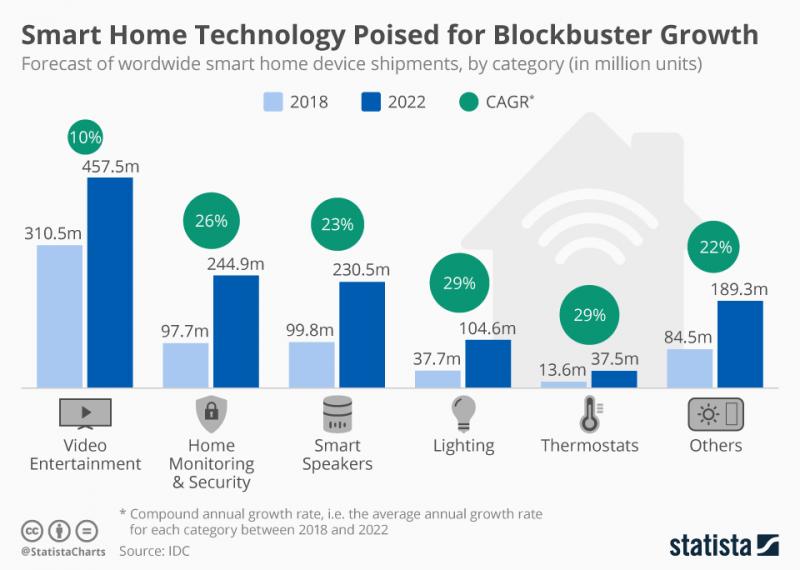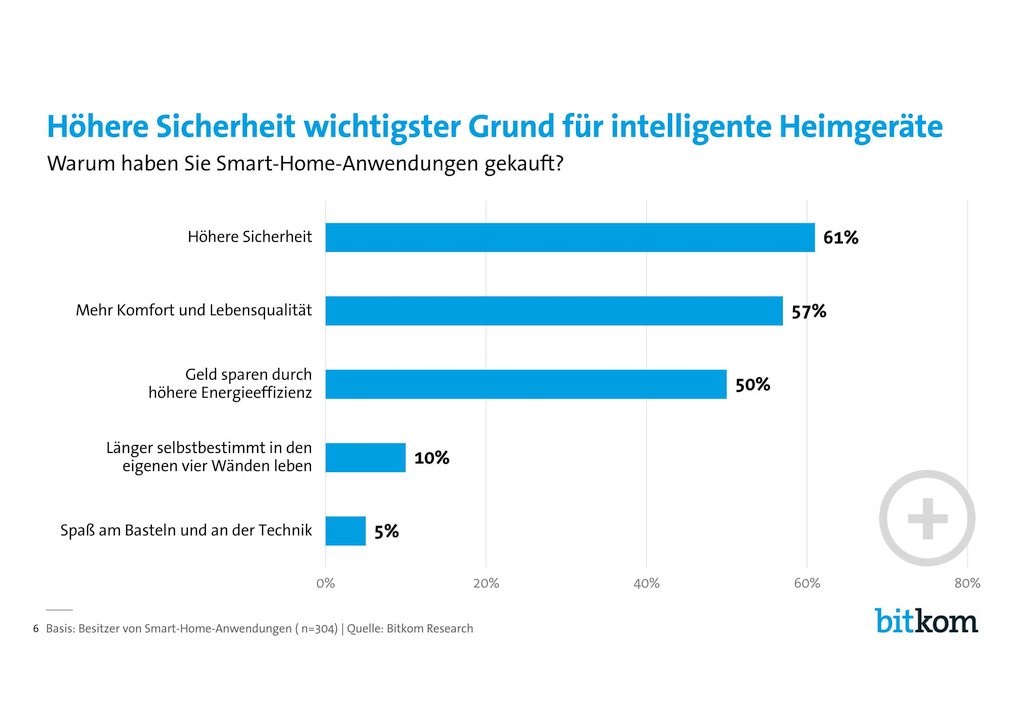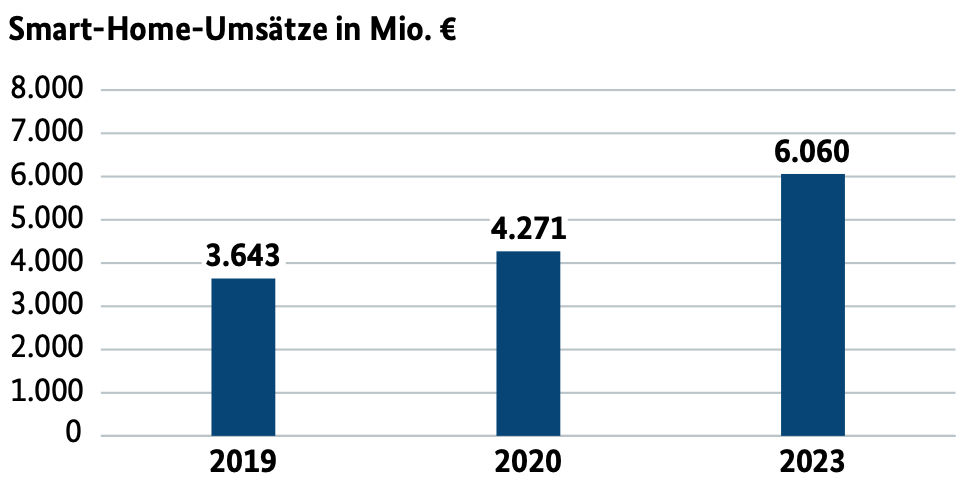Table of Content
The Global Consumer Survey constitutes a representative survey of internet users worldwide. Covering the offline and online world, the Statista Global Consumer Survey offers a global perspective on consumption and media usage. If connected to a mobile device or personal computer, smart homes can be managed from any place, at any time through remote monitoring.

As part of the wider extended reality industry, the global AR market size is expected to grow considerably in the coming years. The smartphone penetration rate in the United Kingdom has increased each year, reaching an overall figure of 93 percent in 2022. While the survey modified the division of respondents over the ages of 55 from 2016 onwards, there has been a clear increase in the rate of smartphone ownership among those aged 55 and above. In 2016, less than half of all respondents over the age of 55 owned such a device, a figure that eventually rose to 82 percent in 2022. Virtual assistants have become a key component of the smart device industry, being absolutely integral to the way that consumers interact with their devices.
Other statistics on the topicSocial media
The GCS Specials allow you to further explore and analyze industry-specific insights from the major markets around the world. Consider smart outlets to manage auto shut-off for electronic devices such as TVs and gaming systems. Smart LED bulbs enable users to turn lights on and off at certain times for security and convenience. Designed to save time and money for home security and safety, smart homes can remotely automate everyday tasks via internet connection. Imagine being able to close and lock garage doors, dim lights, or adjust interior temperatures from any mobile device or personal computer, regardless of your location. Smart cities, also commonly known as digital cities, intelligent cities, and wired cities, are urban areas that collect electronic data from citizens, devices, and assets to manage available resources more efficiently.
The smartphone market still has high growth potential as the smartphone penetration rate is still lower than 70 percent in many highly populated countries, in particular China and India. The revenue of the global smartphone market continued to increase over the last few years, despite stagnating unit sales, due to a growing average selling price of smartphones. Information and communications technology is used in smart cities for a wide range of urban services, including hospitals, traffic and transportation, power plants, water supply, waste management, and law enforcement. Smart connections aim to meet market demand and use the city’s public resources across many different use cases more efficiently. Overall the smart infrastructure segment is projected to be the largest segment over the next five years.
Smartphone market in the Asia-Pacific region
The revenue from smart city infrastructure is forecast to grow to more than 100 billion U.S. dollars by 2025, a share of more than 40 percent of the total smart city revenue worldwide. The smartphone market in the United States is one of the world’s largest, with approximately 298 million smartphone users as of 2021. In line with the overall growth of the smartphone market worldwide, the smartphone penetration rate in the United States has continuously risen over the past several years, reaching 85 percent in February 2021.

By 2025, forecasts suggest that there will be more than 75 billion Internet of Things connected devices in use. Devices whose primary function is not the automation or remote control of household equipment, e.g. smartphones and tablets, are not included here. Similarly, devices that relate to household connection and remote control only to a limited extent, such as smart TVs, are not included either. China, India and the United States rank ahead all other countries in terms of internet users. As of February 2022, China had more than a billion internet users, and India had approximately 658 million online users. The global value of indoor farming reached over 14 billion U.S. dollars in 2020 and is expected to grow over ten billion U.S. dollars by 2027 dollars.
Statistics on Internet of Things (IoT) in the Nordics
Given the amount of data generated by IoT devices, it is no wonder that data privacy and security are among the major concerns with regard to IoT adoption. Once devices are connected to the Internet, they become vulnerable to possible security breaches in the form of hacking, phishing, etc. The country ranks among the leading sugar exporters worldwide, registering an export volume similar to that of Colombia and South Africa. Specifically, Turkey and the United States are the principal export destinations of Moroccan sugars and sugar confectionery, accounting for around 67 million and 33 million U.S. dollars of the trade, respectively. Wheat is mainly produced in the regions of Rabat-Salé-Kénitra, Fès-Meknès, and Tanger-Tétouan-Al Hoceima.

These can also be integrated with Alarm.com Wellness Personal Emergency Response Pendants and wristbands for further protection. You’ll also have access to 24/7 Central Station Monitoring providing immediate alerts to your mobile device, and local first responders and emergency personnel—whether you’re home or away. Although smartphones have brought the power of information to the general population at their fingertips, they have also brought some negative effects with them. Accidents while driving have been on the rise, although the vast majority of motorists believe it is unacceptable to even take a short look at a phone while driving. In the Smart Home market, the number of active households is expected to amount to 7.8m users by 2026.
Deep dive into markets
The most important key figures provide you with a compact summary of the topic of "US smartphone market" and take you straight to the corresponding statistics. On a consumer level, the AR hardware market was valued at just over one billion U.S. dollars in 2022, although is projected to rise to over nine billion U.S. dollars by 2027. In line with this, the number of reachable users of AR glasses is also expected to grow in the coming years.

The most important key figures provide you with a compact summary of the topic of "Augmented reality " and take you straight to the corresponding statistics. In 2020, six household appliances manufacturers worldwide surpassed 10 billion U.S. dollars in revenue with Haier Smart Home leading the ranking with around 36 billion U.S. dollars. The other companies with annual revenues north of 10 billion U.S. dollars are LG, Whirlpool, Midea, BSH Home Appliances, and Electrolux. Smartphone ownership in the United States is most common in the younger age groups.
The average revenue per installed Smart Home currently is expected to amount to US$201.90. Estimates suggest that in 2022 U.S. adults will spend an average of around three hours watching TV each day. This figure has generally fallen in recent years and the downward trend is forecasted to continue in the years to come. The only exception to this trend is the year 2020, when consumption increased due to a growth in media consumption during the coronavirus outbreak.
Aiming to reduce false notifications whether you’re home or away, adding security cameras with video motion detection technology captures customized movement to reduce false positives. You can either program this yourself or enlist a reputable smart technologies provider such as General Security. Checking in on elderly loved ones when you can’t be there provides reassurance regarding safe, independent living. Adding smart technologies, such as wellness and Wellcam facilitates real-time, two-way audio and video communication.
Depending on the device, smart products can adjust to match a specific user’s customized preferences or needs. A smart thermostat can modify your home’s temperature based on local weather conditions, making the space more comfortable for its occupants. You can also set “rules” such as turning on lights or music as you arrive home, or for other automated conveniences.

China and the Far East are the most prominent smart home markets by sales volume, with 40 percent of manufactured devices selling in the region. Within this giant market, there are clear segments grouped by the type of devices used and their functionalities in a smart home system. The IoT refers to a network of devices that are connected to the internet and can “communicate” with each other. Such devices include daily tech gadgets such as the smartphones and the wearables, smart home devices such as smart meters, as well as industrial devices like smart machines. These smart connected devices are able to gather, share, and analyze information and create actions accordingly.
As we’ll outline below, smart technologies boast myriad daily living benefits, while also lowering carbon footprints and expenses. To help avoid costly damages leading to increased premiums, some homeowners’ insurance companies will offer up to 20 percent discounts on yearly policies. Smart home technology is being utilized more and more within homes, for various reasons. Whether just one device or an entire network, consumers are taking advantage of its many features and capabilities to protect their homes, property, and loved ones.

Market constitutes the sale of networked devices and related services that enable home automation for private end users . Considered are devices that are connected directly or indirectly via a so-called gateway to the Internet. Their main purposes are the control, monitoring and regulation of functions in a private household. In 2020, sea fishing in the country generated a production value of roughly one billion U.S. dollars.

No comments:
Post a Comment